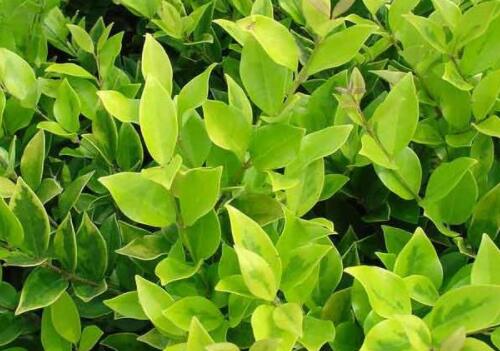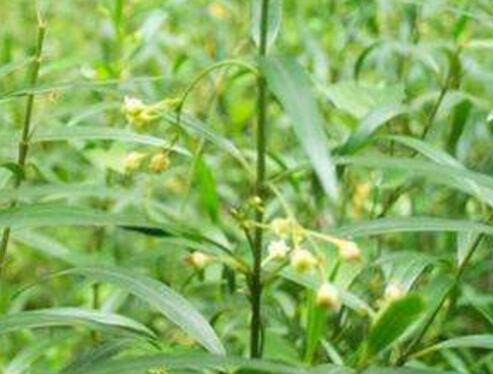Can evergreen be hydroponically cultivated? How is hydroponic culture better?
Now, water-raised potted plants have gradually become a trend. has this "water-raised wind" blown to your home? The common cultivation method of evergreen is soil. Can evergreen be hydroponically cultivated? From the perspective of environmental protection, the roots of hydroponic plants are less likely to breed bacteria than soil-cultured plants, and they look more "pleasing to the eye". Of course, evergreen can also be hydroponically cultivated, but if the care is not proper, the survival rate is also relatively low. If we want to cultivate thousands of young people by water, we should start with the following aspects:

1. Rinse the soil on the roots and remove the dead roots.
2. Prepare a suitable transparent color vase and wash it and set it aside.
3. When hydroponic culture, do not immerse all the roots in water, leave 1 stroke 3 or 1 stroke 4 on the water surface.
4. In the process of hydroponic culture, the water is changed every 3-4 days.
5. When ten thousand young people grow new roots, the old roots should be removed in time.
6. after growing new roots, the water can be changed every 15 days, and foliage plant nutrient solution can be added, but it is not appropriate to replace all the water.
There are many ways to cultivate evergreen by water.
1. Root washing method
It can be carried out all the year round, but the best time is in spring and autumn. Specific operation methods:
① chooses evergreen with strong growth and soil cultivation which has been formed and has ornamental value.
② removed the plant from the pot and removed the rhizosphere soil.
③ rinses the soil in water and cuts off part of the old roots. In order to prevent root rot at the initial stage of hydroponic culture and promote the formation of new roots, 0.5% potassium permanganate can be used for soaking and disinfecting.
④ put the treated evergreen plants into a prepared container and injected tap water from the roots of no more than 2 / 3 plants to cultivate new roots.
2. Water insertion method
It is generally carried out in spring and autumn, because the temperature of late autumn and early spring can not reach the required temperature for rooting, cuttings are vulnerable to microbial infection and rot in summer high temperature season. The strong branches about 1cm in diameter were selected during water insertion, and the aerial roots on the stem nodes were retained and cut into long segments of 10cm. The cut was disinfected with potassium permanganate, dried the juice from the wound, and then inserted into plain sand or water to maintain high air humidity at about 25 ℃. After 20 days or so, the cuttings could take root and germinate to form a suitable hydroponic plant material.
During the period of water healing and rooting, breathing is more exuberant, and there must be an adequate supply of oxygen. Therefore, at the beginning of the water insertion, the water should be changed frequently to keep the water quality clean and meet the oxygen needs of the cuttings, and the cuttings and utensils should be washed clean with clean water, especially to strengthen the flushing at the cut, which can be transferred to normal hydroponic culture and maintenance after rooting.
3. Split-plant method
Ramet is usually carried out at the beginning of growth in spring, which reduces the damage to the plant in spring, and enables the separated plant to return to normal growth quickly. First, remove the plant from the basin, shake off most of the basin soil, straighten out the knotted root system, let the tiller seedlings and roots exposed, and then divide the stem of the mother plant into several clumps with a sharp knife as needed. The wound was disinfected (coated with plant ash or sulfur) and then hydroponically maintained.
Hydroponic evergreen needs to pay attention to the following points:
I. Plant selection
Generally, there are two main methods now, that is, branch water insertion is taken from the planted evergreen, and new roots can sprout in about 10 days. Can also be used to wash the root water cultivation method, that is, the soil-planted evergreen root cleaning and then hydroponic culture, can be washed repeatedly with tap water, but be careful not to hurt the roots.
2. Selection of water quality
The source of water for cultivation and protection of ten thousand years of green water should choose the disinfected tap water that meets the national drinking water standard, which contains salt concentration; the total concentration of inorganic salt added should be ~; the total concentration of inorganic salt added should be
III. Selection of water quantity
The root washing evergreen hydroponic culture does not need to add nutrient solution at the initial stage, this is because the root system is injured (it will be more or less injured when removing the soil), and the water can not be added so as to pass the root system slightly.
IV. Use of nutrient solution
The hydroponic culture of evergreen leaves can increase the nutrient solution for about 3 weeks, a small amount for the first time, and then it can be applied according to the growth situation. The pH value of the hydroponic nutrient solution is 6.0 to 7.0, and the height in the bottle should not exceed 50% of the root height. Change the new nutrient solution once or twice a week; the higher the ambient temperature, the higher the frequency of changing the new nutrient solution.
5. Humidity maintenance
Wannianqing prefers high humidity and avoids dryness, and should often spray water on stems and leaves during growth.
The survival of hydroponic evergreen lies not only in the selection of strong plants, but also in the scientific cleaning and disinfection after ramet, otherwise it will cause bacterial infection and affect its survival rate.
Time: 2019-03-19 Click:
- Prev

How much is the price of evergreen shrub Jinsen privet seedlings? What's the difference between Golden Leaf Privet and Golden Leaf Privet? How do you plant it? Common diseases
Ligustrum lucidum, alias: Ligustrum lucidum, a large evergreen shrub with white flowers and purple fruit. Flowering from May to July, panicles with white flowers. How much is the price of Ligustrum lucidum seedlings? What's the difference between Golden Leaf Privet and Golden Leaf Privet? How do you plant it? What are the common diseases? Learned from Jiangsu Seedling Base
- Next

(medicinal plants) how much is the price of Xu Changqing per jin? How to plant it? What are the effects and effects?
Xu Changqing is distributed in Heilongjiang, Jilin, Liaoning, Hebei, Henan, Shandong, Inner Mongolia, Jiangsu, Zhejiang, Jiangxi, Fujian, Hubei, Hunan, Guangdong and other places. It has high medicinal value. So, how much is the price of Xu Changqing per jin? How to plant it? What are the effects and effects? It is understood that
Related
- Fuxing push coffee new agricultural production and marketing class: lack of small-scale processing plants
- Jujube rice field leisure farm deep ploughing Yilan for five years to create a space for organic food and play
- Nongyu Farm-A trial of organic papaya for brave women with advanced technology
- Four points for attention in the prevention and control of diseases and insect pests of edible fungi
- How to add nutrient solution to Edible Fungi
- Is there any good way to control edible fungus mites?
- Open Inoculation Technology of Edible Fungi
- Is there any clever way to use fertilizer for edible fungus in winter?
- What agents are used to kill the pathogens of edible fungi in the mushroom shed?
- Rapid drying of Edible Fungi

